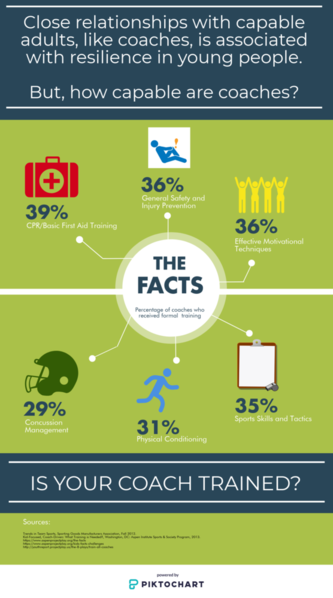A growing body of literature has shown that youth sport participation may serve a protective function for youth, particularly those from high-risk backgrounds (Hermens et al., 2017). For instance, sport participation is positively correlated with physical activity, life skill development, academic achievement, and social and emotional learning (Holt et al., 2011). Additionally, relationships with caring adults have a significant impact on healthy development, particularly during middle childhood and adolescence. However, youth sport can also have negative impacts stemming from injury, stress, anxiety, inequalities in participation opportunities and poor coaching (Merkel, 2013). While coaches play a key role in the lives of their players, they are dangerously undertrained, less than 20% of “little league” coaches and less than 8% of high school coaches have received any formal training (Merkel, 2013).
Relationships with caring adults is associated with resilience in children. Coaches can serve that role for the millions of kids who participate in sport each year. My public health communication campaign is intended to reach the community in Gainesville, FL. My campaign included an infographic, blog post and a radio ad. The infographic is intended to raise awareness about the lack of training in youth sport and is ideally suited for use on social media to raise awareness and educate the public. A blog post is also available and is directed towards parents. The main focus of the blog post is to help parents recognize the importance of training youth coaches. In a sense, it makes parents question if they know about their child's coach to feel comfortable leaving their child at practice with them. The radio advertisement is directed towards coaches and youth-serving organizations who want to train their coaches on effective competencies for coaching by attending a training hosted by a nationally recognized organization. The following are expected outcomes of the program (1) improved coach/athlete relationships (2) lower attrition rates, (3) increased physical activity, and (4) development of resilience-building life skills for youth.



Comments (1)